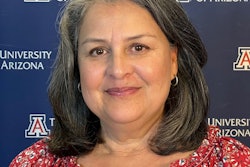While attending graduate school at Stanford University, Dr. Chon Noriega watched four films that impacted his life: “Stand and Deliver,” “La Bamba,” “Milagro Beanfield War” and “Born in East L.A.”
All four movies, which came out within a year of each other in the late 1980s, showcased for Noriega Hispanic actors and the impact Hispanics had in America. They had an indelible impact on Noriega, a film and media studies professor at the University of California, Los Angeles, who has written a book, Shot in America: Television, the State, and the Rise of the Chicano Cinema, and edited nine books on Latinos in film, media and art.
Noriega earlier this summer cohosted a month-long series on Turner Classic Movies (TCM) called “Race & Hollywood: Latino Images in Film.” Noriega and co-host Robert Osborne, a film historian and Hollywood columnist, viewed, debated and analyzed more than 30 films, from silent films from the 1920s to more modern films such as “Lone Star” released in 1996.
Noriega says it was the first time 19 of the films such as “Boulevard Nights” that featured an all-Hispanic cast were broadcast on television.
“When you look at U.S. Latinos … we’ve got fewer than 100 films in the entire history of Hollywood where there are tens of thousands of films, and that includes exploitation films,” he says. “There was a higher integration in the ’50s [with] César Romero and Ricardo Montalbán. Now, who is there? Jimmy Smits. Salma Hayek. Edward James Olmos, but it has been a while for him to be the lead character. You don’t have many in films, but the Latino population is twice as large.”
A problem Noriega sees in the accurate portrayal of Hispanics stems from non-Hispanic directors pushing Hispanic actors to speak with a certain accent, or when they try to make them darker. One example: when Puerto Rican actor Juano Hernández played a Black judge in the 1955 movie “Trial.”
“That is part of the irony. Most Latino actors don’t fit that type. Th ey have to be kind of squeezed into that type of framework, which I find hilarious,” Noriega says. “Latino is not a racial category. It is a multiracial category.”
Born in Miami and raised in Chicago, Noriega received a bachelor’s in English at the University of Illinois at Chicago. He earned his master’s and doctorate at Stanford.
After being hired by UCLA in 1992, he curated art projects for several years, helped restore and preserve independent films and co-founded the 500-member National Association of Latino Independent Producers. In 1999, when he helped establish the NALIP, he was named by Hispanic Business as one of the Top 100 Most Infl uential Hispanics.
The 47-year-old Mexican American directs UCLA’s Chicano Studies Research Center that researches the Chicano and Hispanic populations. The center also hosts, “A Ver: Revisioning Art History,” a book series showcasing and preserving the work of Puerto Rican, Chicano and other Hispanic artists, a project Noriega says is the first of its kind in the nation. So far, 15 books have been commissioned.
He has received numerous awards for his work, including the Ann C. Rosenfield Distinguished Community Partnership Prize in 2004-2005 for working with an East Los Angeles nonprofit organization to preserve, catalog and showcase artwork.
“Chon Noriega is uniquely positioned to make contributions to both academic scholarship and to popular culture, and the TCM month-long series is a great example of Noriega’s eff ectiveness,” says fellow UCLA colleague and film and media studies professor John Caldwell.
Noriega’s latest project is a book on 75-year-old Puerto Rican multimedia artist Raphael Montañez Ortiz, who is associated with the destruction art movement established in the 1950s.


















